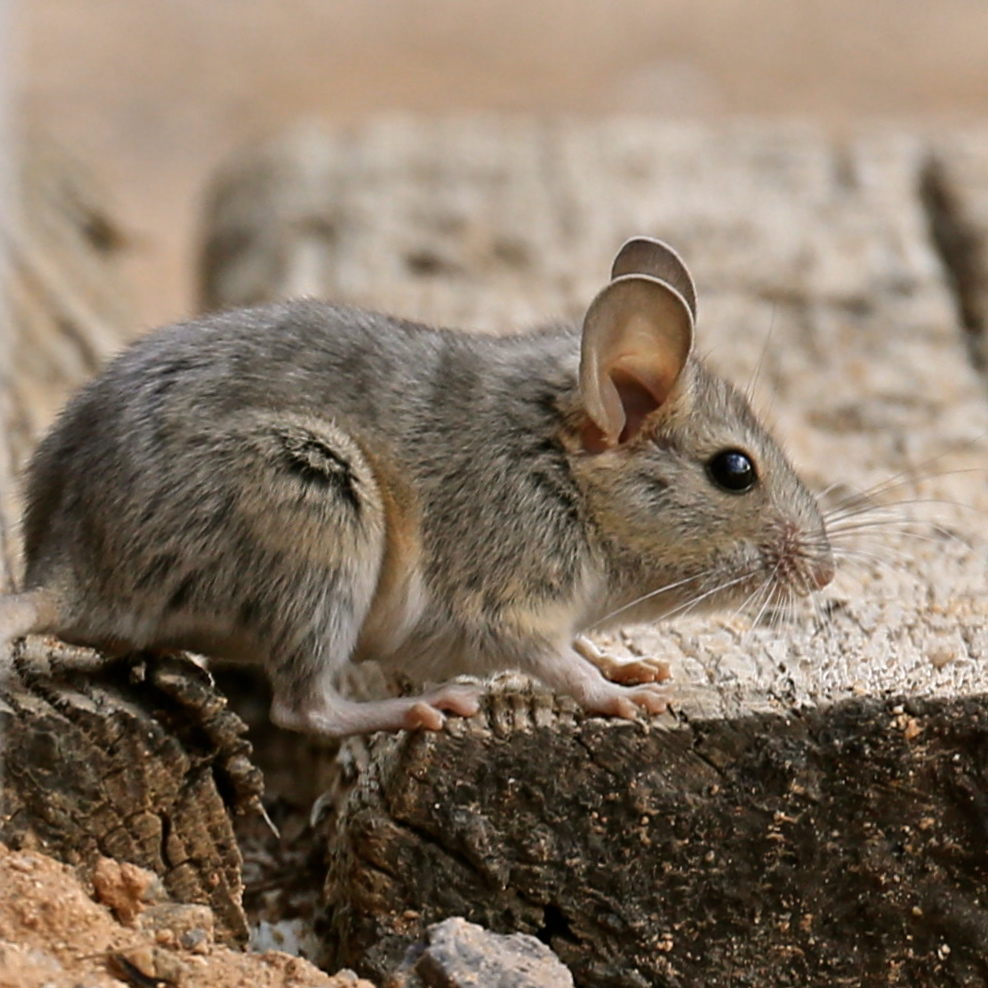

Another, called agouti, controls lighter yellow and reddish pigmentation. One gene, called Mc1r, stimulates production of the black pigment in coat fibers. Some of the genes exert more influence on the color palette than others, which fine-tune the hues and patterns. Scores of different genes control fur pigmentation, and thanks to modern genomic technology, they've all been identified at the DNA sequence level for lab mice.

Biologists have worked out in fine detail the genetic and biochemical processes that control mammalian coat color, particularly for the common lab mouse, an evolutionary cousin of rock pocket mice. "But even after more than 50 years of intensive study," Nachman said, "we still don't know which genes are involved." In fact, he added, "there are very few examples where we actually know the genes that underlie an adaptation in nature, and almost no examples for cases of natural selection that are not induced by human disturbances," such as pesticide or heavy metal resistance. Peppered moths make a compelling case study in natural selection. A classic illustration of "survival of the fittest." As the cities reduced the pollution, the tree trunks lightened up, and so did the moths. Eventually, black became the norm for urban peppered moths. Better camouflaged than their light-colored brethren, the dark forms survived and proliferated. In a short time, though, dark variants of the moths sprang up. Coal soot from burgeoning industry gradually blackened tree trunks in urban areas, and left the moths more vulnerable to predators. In pre-industrial England, most peppered moths had mottled grey wings, camouflaging well with the birch trees upon which they rested. The story is reminiscent of the peppered moth lesson from high school biology class. Almost all of the mice collected from the volcanic formations had dark coats-the better to stay concealed from hungry owls, which can pick off mice from contrasting backgrounds even at night. Nachman's group collected pocket mice from two of these black rock islands-the Pinacate formation in southwestern Arizona and the Pedro Armendaris formation of New Mexico. But scattered throughout the southwest are islands of black basaltic rock formed from not-so-ancient lava flows. Most of the mice have light tawny fur, which blends in well with the desert granite substrates they typically inhabit. Nachman, examined the coat colors of rock pocket mice.

Population has a high turnover rate as high as 95%.The group, led by Professor of ecology and evolutionary biology Michael W.

Incisors appear 9 days after birth, eyes open on day 14, and ears open no sooner than day 14. The mouse's breeding season is in the spring adult females can give birth to one or more litters of two to five young during the spring and summer. They are very small, about the size of a grown man's thumb. Desert pocket mice are nocturnal, and some of them hibernate in burrows during the winter. They will use these to break through hard soil digging for seeds. They have two large teeth on each jaw located in the front of the mouth called incisors. They have been known to eat mainly mesquite seeds and palo verde seeds. It also stores seeds in the underground burrows where it lives. Like other pocket mice, the desert pocket mouse has fur-lined cheek pouches on the outside of its mouth, which it uses to gather the seeds it finds. Its primary diet is seeds, making it a granivore. True to its common name, the desert pocket mouse prefers sandy, sparsely vegetated desert. The desert pocket mouse ( Chaetodipus penicillatus) is a North American species of heteromyid rodent found in the southwestern United States and Mexico. Chaetodipus penicillatus ( Woodhouse, 1852)


 0 kommentar(er)
0 kommentar(er)
